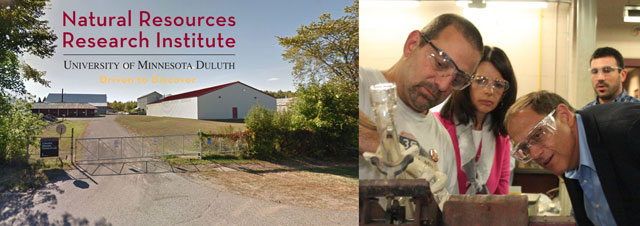The mission of the University of Minnesota Duluth’s Natural Resources Research Institute (NRRI) is to “deliver research solutions to balance our economy, resources and environment for resilient communities.” On a recent Northeast CERT tour, participants were given a sneak peek at the innovative ways NRRI is fulfilling their mission in the realm of energy.
“We want to deliver solutions for resilient communities,” noted Director Rolf Weberg. “$18 billion dollars of energy costs goes out of Minnesota every year. We are looking at ways to chip away at that very large outgoing budget by using biomass energy.”
Although there are many energy-themed studies being pursued by NRRI (measuring the efficacy of three unique solar panel installations and testing a new wind turbine prototype were both mentioned), the tour focused on two projects: the production of bio-coal and the development of a quick-assembly, energy-efficient house.
See the presentation NRRI shared below. Keep reading to learn about the tour!
The NRRI Coleraine Lab Tour
Biomass: The Renewable Energy Center building was built in 1911 as the U.S. Steel research lab, but inside there is a very modern development. “This is a cutting edge installation. No one else in the world is doing what NRRI’s Dick Kiesel and Don Fosnacht are doing,” said Director Rolf Weberg.
- NRRI staff are using a process called torrefaction to turn woody biomass into small bio-coal briquettes that can be blended along with coal in existing power plants.
- Using this method, NRRI is radically increasing the number of BTUs created per pound of biomass material. The scientists used the metaphor of roasting coffee beans, with the ability to light roast or dark roast the briquettes according to the energy needs of the power plant.
- As added benefits, the torrefied biomass has no sulphur or mercury emissions, creates jobs with sustainable forestry practices, can be stored outdoors similar to coal, and reduces the amount of dry, dead timber on the forests floors, decreasing the risk of forest fires.

Housing: Participants next visited House3 emergency deployable housing developed by NRRI’s Patrick Donahue and Scott Johnson. “The idea for NRRI with these deployable houses is to start a new industry, manufactured in Minnesota, using Minnesota materials,” said June Breneman, Public Relations Manager for NRRI.
- The house can be assembled quickly (6-8 hours, see video below) and is transported on a flat-bed truck.
- It is assembled into a 650-square foot, three-bedroom house. Plumbing and electrical are already in place, ready to connect, and the house can be easily disassembled and moved to another site.
- The homes are also extremely energy efficient. Built to Minnesota code, they are R50 on the base, with R32 ceilings and R20 walls.
- These don’t have to be for emergency housing alone, and NRRI staff have been thinking of other applications, too. “These actually make ideal cabins,” Don Fosnacht with NRRI noted. Working with local tribal reservations or ski resorts for their housing and lodging needs were additional ideas.
See photos from the tour
Thanks to all the staff at NRRI for their help in creating such an educational and interesting tour!



